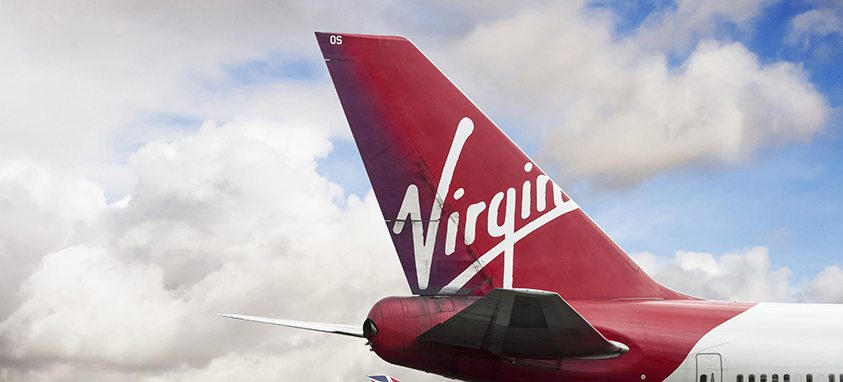It’s a day to remember for travelers everywhere—Virgin America, after 11 years of service, has scheduled its final three flights for April 24. Two flights will leave from San Francisco, with one arriving in Newark and the other in San Francisco. Employees will enjoy one final hurrah as the last flight travels from Los Angeles to San Francisco, marking the end of an era.
Virgin America was an airline with trials, tribulations and triumphs. Topping Travel + Leisure’s list of the best domestic airlines for nine years in a row and receiving platinum status from Time’s Best in Travel in 2017, it was a beloved and top choice for many business travelers. Smart Meetings looks back on Virgin America’s history.
Early Beginnings
Virgin America was founded by Richard Branson (who just so happened to be featured on the November, 2017 Smart Meetings cover). The goal was to create a U.S.-based, affordable, independent airline. Originally named Virgin USA, San Francisco was chosen as its headquarters, and plans for its first flight were set for 2005. However, due to hesitant investors, the first flight was delayed and re-planned for 2006. The name was changed to Virgin America in the process.
The first flight was delayed yet again when the airline faced opposition from state representatives in California and New York, Air Line Pilots Association and Continental Airlines. The initial application to the U.S. Department of Transportation was denied, but that did not stop Virgin America’s General Counsel David Pflieger and CEO Fred Reid from filing a revised application. With these new revisions—which included voting shares being held by a Department of Transportation-approved trust and potential removal of the Virgin brand all together—the airline received a tentative go-ahead from the Department of Transportation.
First Flights and Stand-Out Offerings
Los Angeles and New York to San Francisco: these were the inaugural flights of Virgin America in August of 2007. Naming this aircraft Air Colbert (in honor of comedian Stephen Colbert), Virgin America was off to the (airline) races. However, it wasn’t an immediate hit among travelers—in fact, it wasn’t until the third quarter of 2010 when it reported its first profit.
In 2009, Virgin America upped its popularity by becoming the first airline to offer Wi-Fi access on every flight. Gogo Inflight Internet was a no-brainer for those hoping to work from 35,000 ft. above ground and others looking for a way to pass the time on longer flights.
The airline also offered the perfect amount of ambience, with violet lights lining the aircraft and relaxing music playing throughout the boarding process. Seatback entertainment was also available on every flight, allowing you to play games, order amenities, watch TV or listen to music. If you wanted to relax, Virgin America was the perfect airline for you.
Alaska Air Acquisition
On April 4,2016, Alaska Air purchased Virgin America. Though founder Richard Branson expressed unhappiness, the airline’s shareholders approved the merger. A lawsuit came next, in which consumers attempted to block the merger. However, the Department of Justice approved the combination and the acquisition was official on December 14.
On March 22, 2017, Alaska Air announced that Virgin America would be retiring its name in 2019. Alaska Air affirmed that it would continue many of Virgin America’s trends, from its in-flight entertainment to its mood lighting, as these were considered important perks cherished by dedicated travelers of the airline. On January 8, 2018, Alaska Air officially received their single operating certificate, beginning the retirement process of Virgin America’s signature logos and name—a bittersweet day indeed.
What This Means for Planners Now
Those who were a part of Virgin America’s Elevate loyalty program were able to activate their pre-assigned Alaska Mileage Plan number starting January 1 of 2018. Remaining Elevate points were automatically converted into Mileage Plan miles.
Exciting perks from the merger? You can expect six times more daily flights from the U.S., Canada, Mexico, Costa Rica and Cuba—much more convenient for those wanting to fly at certain hours. For those in the San Francisco Bay Area, there will be double the daily amount of flights from the Bay to Los Angeles International Airport (LAX).
Through the ups and downs Virgin America has faced, many travelers look back on the airline with a nostalgic fondness. Alaska Airline’s marketing team hopes their “Different works: More flights. More rewards. More to love.” campaign will help people move on.






